Sunflower Beetle
Sunflower beetles are native to North America, and feed on native and cultivated sunflowers. Feeding on leaves by adult beetles and larvae may result in extensive damage, causing poor seed set or seed filling, reduced yields, and delayed maturity.
Biology
Identification: Adult sunflower beetles (Zygogramma exclamationis) (Figure 1) are about six to eight millimetres (1/4-3/8 inches) long. The head is reddish brown and the thorax (area behind the head) is pale yellow with a reddish brown patch at the base. Each wing cover has three dark brown stripes that extend the length of the back. The fourth stripe ends at the middle of the wing in a small dot that resembles an exclamation point. Larva (Figure 3) are greenish-yellow with a brown head capsule and have a humpbacked appearance.
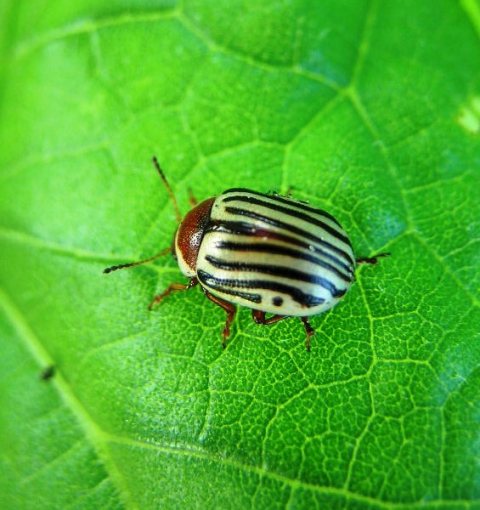
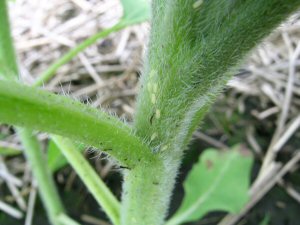
Figure 1. Adult sunflower beetle. Figure 2. Eggs of sunflower beetle.
Lifecycle: Sunflower beetles overwinter as adults in the soil. They emerge in the spring from fields where sunflowers were grown the previous year. Usually their emergence coincides with the time that sunflower seedlings begin to appear in late May. The beetles feed throughout the day on the emerging seedlings. Eggs (Figure 2) hatch about a week after they are laid and the young larvae feed on the leaves at night. They hide among the bracts of the flower bud and in the axils of the leaves during the day. The larvae feed for about two weeks but, because of the long egg laying period, larvae may be present in the field for about six weeks.
The mature larvae (Figure 3) drop to the ground, enter the soil, and pupate in earthen cells. The pupal stage lasts about two weeks. Adults of the new generation emerge and feed for a short period in late August and early September. They feed on the uppermost leaves or bracts of the plant before re-entering the soil to overwinter. Adults move into the soil directly under sunflower plants to overwinter.
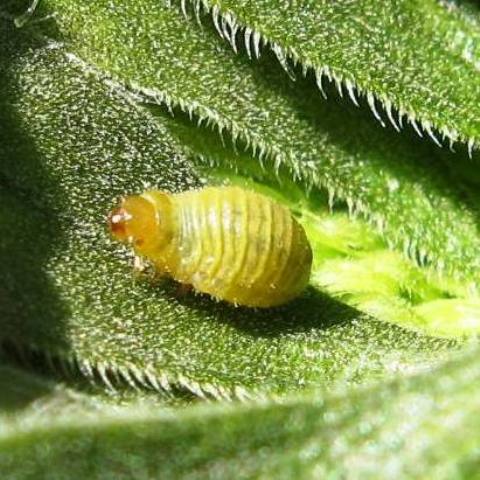
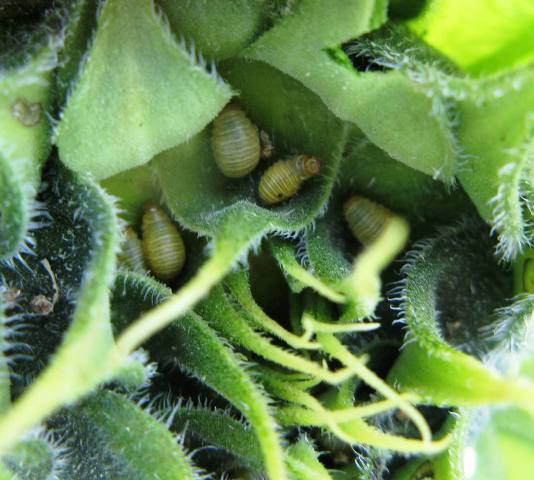
Figure 3. Larva of sunflower beetle. Figure 4. Larvae hiding among sunflower bracts
Summary of Lifecycle:
| May | June | July | August | September |
| Overwintering adults become active, start feeding | Adults continue feeding, lay eggs | Larval feeding on leaves | Larval feeding ends, pupation in soil begins, new adults emerge | New adults emerge and feed, enter soil to overwinter |
Scouting Techniques
Noticeable damage is often first seen on plants near the margins of sunflower fields. Both the larvae and adults are easily seen and counted on seedlings and young plants. Monitor in at least two locations on each side of a field with one or two sampling sites near the centre. Twenty plants should be examined at each sampling site.
Economic Thresholds
The threshold is one to two adult beetles per seedling at the two to six leaf stage or ten to 15 larvae per plant during the summer. Severe leaf damage may occur to plants in the two to six leaf stage when adult beetles are numerous. Control may be necessary if defoliation caused by either the adults or the larvae reaches 25 to 30 per cent, especially if more defoliation is expected. If the majority of the larvae have reached maturity at about 25 per cent defoliation, control should not be necessary.
Control
Insecticides: Seed treatments containing thiamethoxam can help control conflower beetles. Several foliar insecticides are also available to control sunflower beetle. Consult the Guide to Field Crop Protection for product information.
Cultural Controls: Reseach in North Dakota found that levels of sunflower beetle adults and larvae decreased as planting date was delayed.
Biological Controls: Natural controls usually keep sunflower beetle populations below damaging levels. Sunflower beetle eggs are eaten by the thirteenspotted lady beetle and the convergent lady beetle. Larvae of the common green lacewing consume both eggs and larvae. Damsel bugs, the twospotted stink bug (Perillus bioculatus), and the ground beetle Lebia atriventris feed on larvae of sunflower beetles. Parasitoids attack sunflower beetle eggs, larvae and adults.
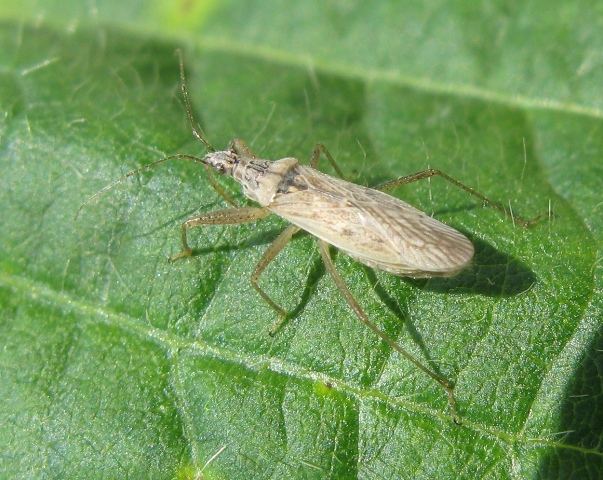
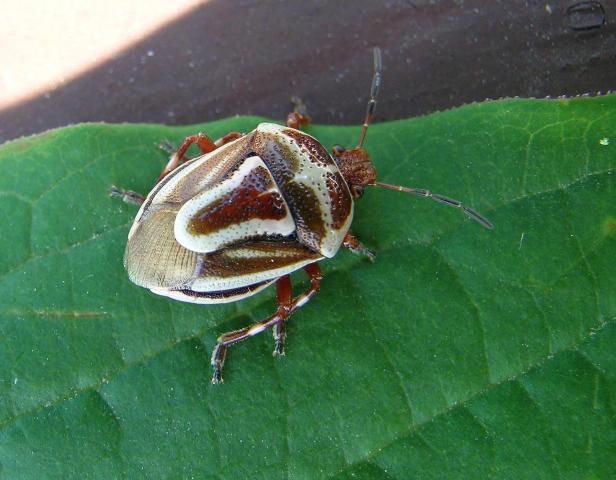
Figure 5. Damsel bug. Figure 6. Twospotted stink bug.
